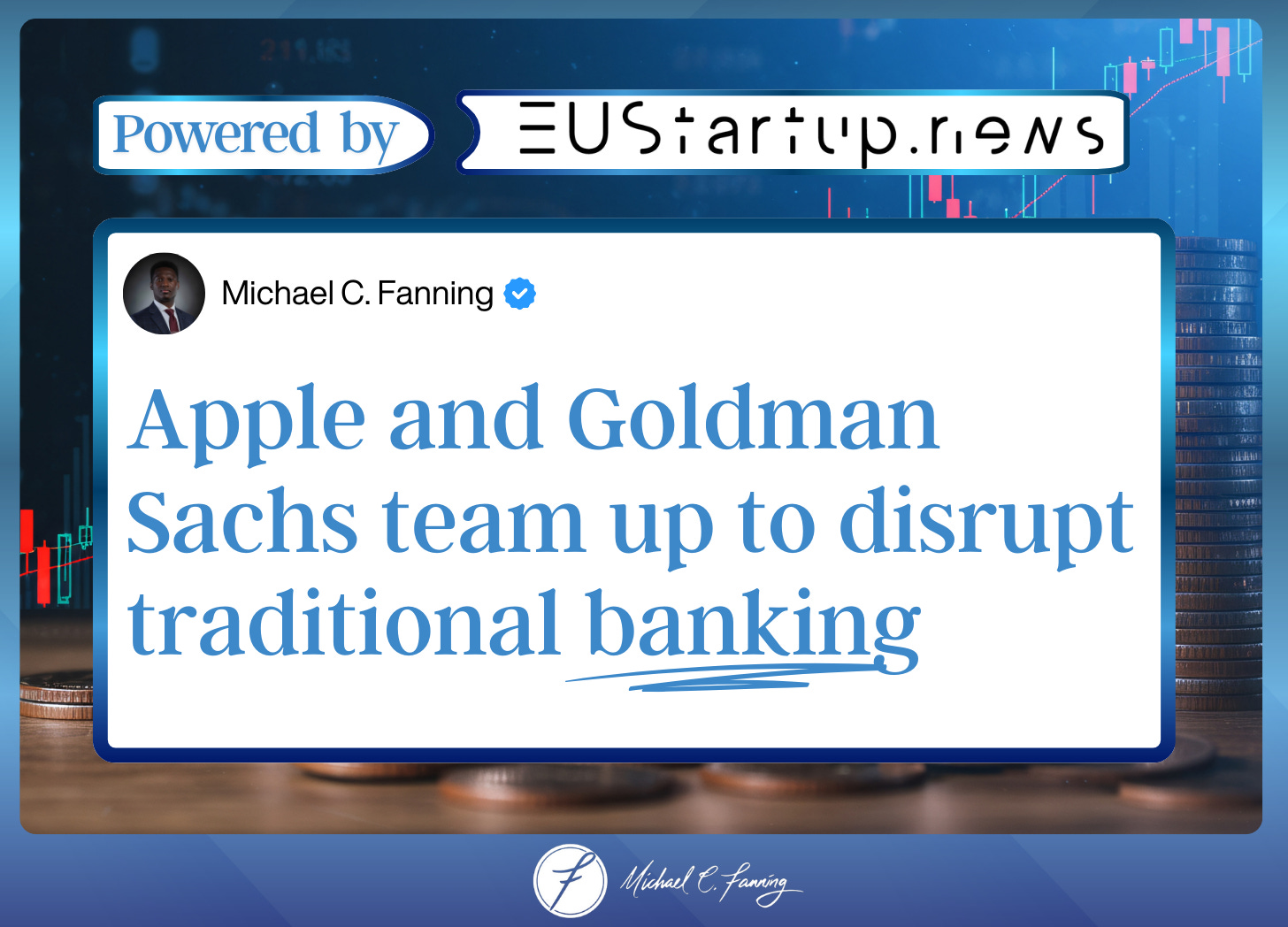Apple and Goldman Sachs team up to disrupt traditional banking
Apple has joined forces with Goldman Sachs Bank USA to create an impressive new FinTech service in America. This move comes at a time when regional banks are struggling to keep their deposit bases, and cash-starved FinTech startups are also struggling. While the traditional banking industry’s trust falters, Apple has come up with an offer that pays annual returns of 4.15% to savers, compared to the less than 0.5% paid by average banks.
This offer is available to customers with Apple’s credit card, Apple Card, and it provides no minimums, no lockups, and FDIC insurance. Apple has no banking license, but it is fronting for Goldman Sachs, which is FDIC-insured and has a state charter. In other words, Apple is a neobank, much like Chime, Revolut, and Monzo, only with unmatched brand strength due to the over two billion iPhones in use globally, which are now serving as Goldman’s branch network.
The rise of Apple as a neobank and the decline of traditional banking institutions
According to polling company Gallup’s annual “Confidence in Institutions” survey, only 27% of Americans reported having a “great deal or quite a lot” of confidence in their banks last year, prior to the Silicon Valley Bank (SVB) crisis. This number is down from its peak of 60% in 1979. In contrast, Apple was ranked first for the tenth consecutive year in 2022, according to Interbrand’s annual Global Best Brands ranking.
Only JPMorgan made it to the top 25 banks, ranked at 24, just ahead of YouTube. “Apple goes at warp speed, and a lot of banks are driving 45 mph in the right lane,” says Wedbush Securities analyst Dan Ives. Essentially, Apple has become a fast growing fintech with enough cash liquidity to outshine most traditional banking institutions.
Apple’s high-yield savings account can challenge the banking industry
Goldman’s deposit “run” is getting bigger as the bank grows its consumer and transaction banking business. Apple’s 4.15% savings account is expected to give this trend a major boost. This new savings account is just the latest in a series of high-profile financial offerings from Apple. Last month, the company began offering its buy-now-pay-later product, which allows consumers to split payments into four interest-free instalments or pay for them later, with zero interest or fees.
In July, Apple launched tap-to-pay, enabling merchants to accept card payments directly from their iPhones. Apple’s strategy involves integrating itself into every aspect of its customers’ lives by offering financial products to consumers and merchants, collecting swipe fees, and cross-selling its own products.
In all of its financial products, Goldman Sachs operates in the background, despite its own formidable reputation, indicating that customers no longer value the marble columns and venerable histories that thousands of redundant FDIC-insured financial institutions continue to bank on. One hundred and fifty-four-year-old Goldman Sachs is essentially an infrastructure player, similar to Evolve and Cross River, who are banking-as-a-service providers serving other FinTechs.
Apple’s digital wallet: the complete dashboard for consumers’ financial lives
The potential for a super app: could Apple follow in AliPay’s footsteps?
Apple is positioning its digital wallet to be the complete dashboard for consumers’ financial lives by combining savings, peer-to-peer transfers, and payments with tap-to-pay in-store and the Apple Pay button at online checkouts. This roadmap could end with a so-called super app like China’s AliPay. This app started as a digital wallet offering peer-to-peer payments in 2004. Today, AliPay has 1.3 billion users and a host of wide-ranging features, including bill pay, food delivery, and ticket purchasing. In the second half of 2021, the app’s retail business brought in $41 billion in revenue. While Apple is sprinting towards the super app finish line, the future of the banking industry remains uncertain.



